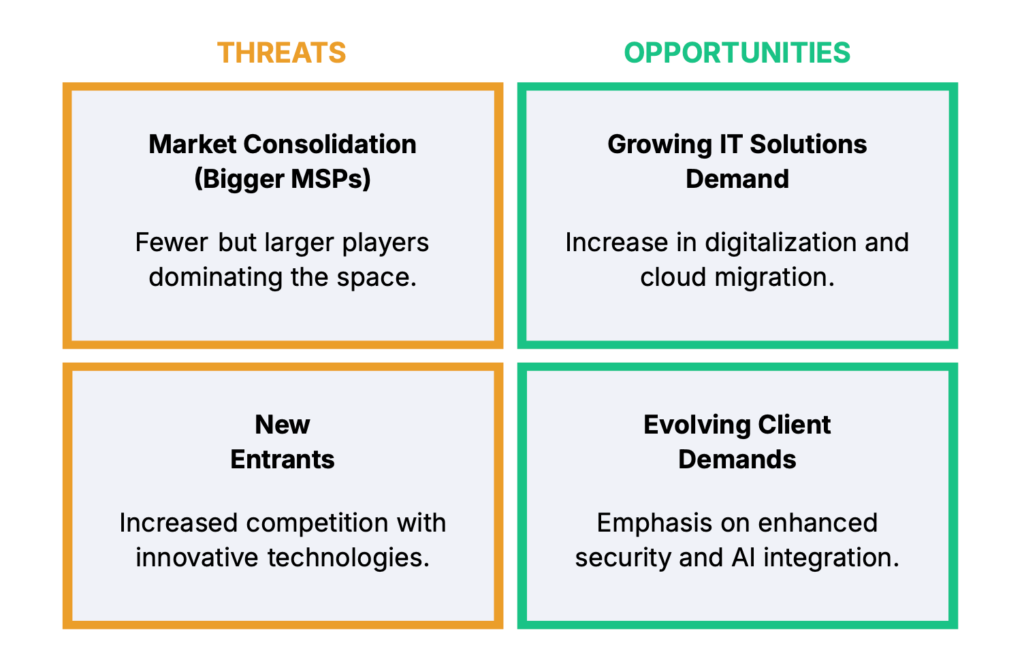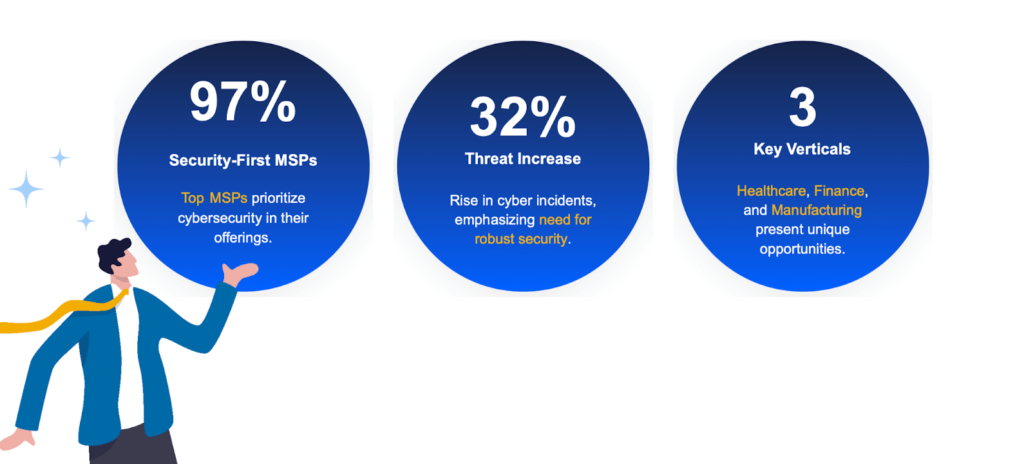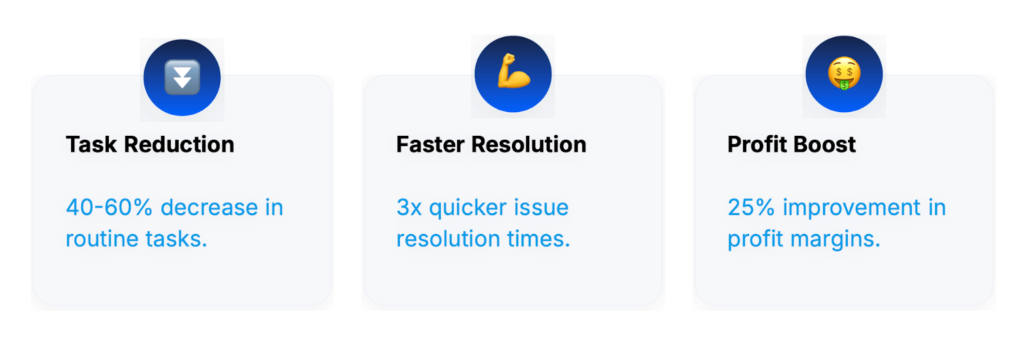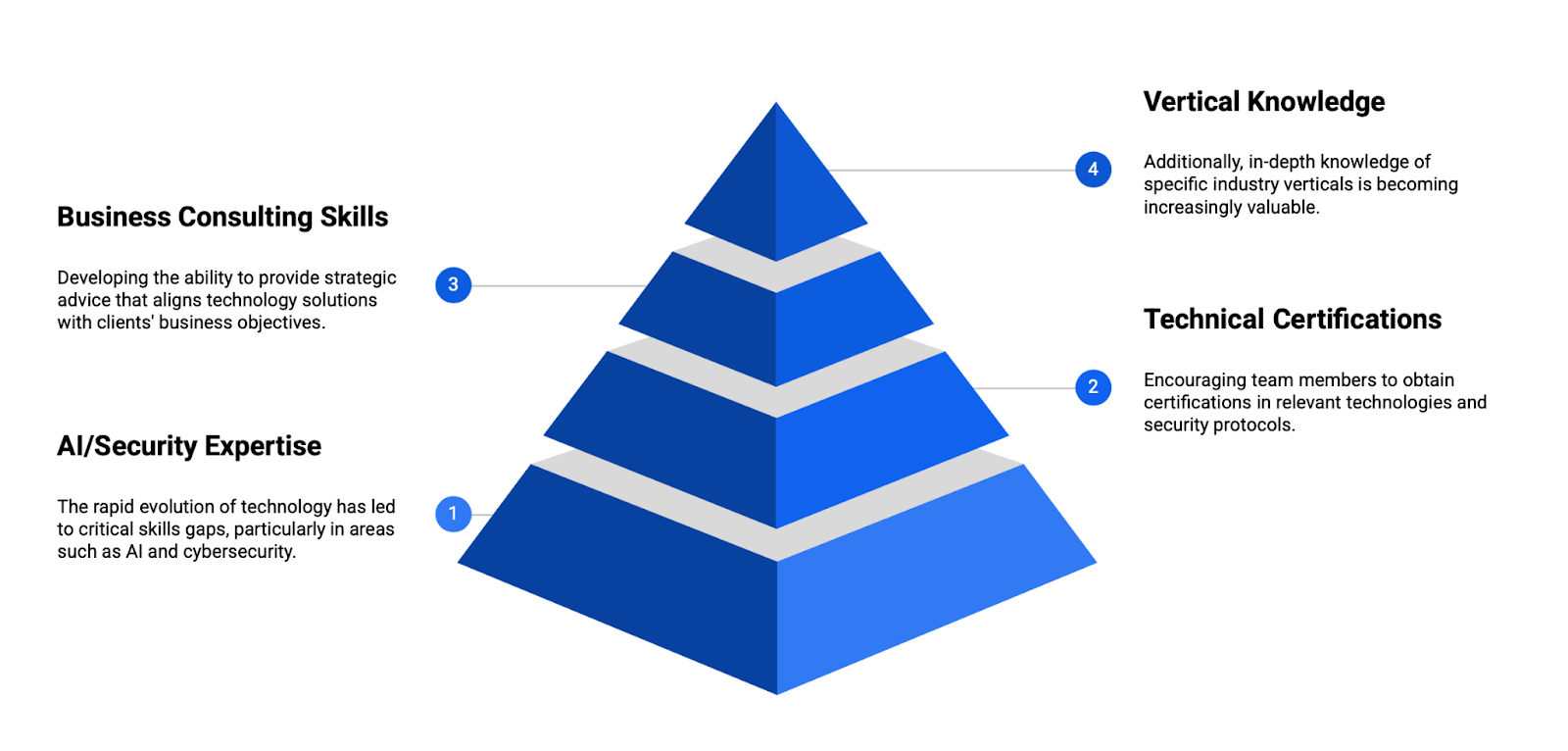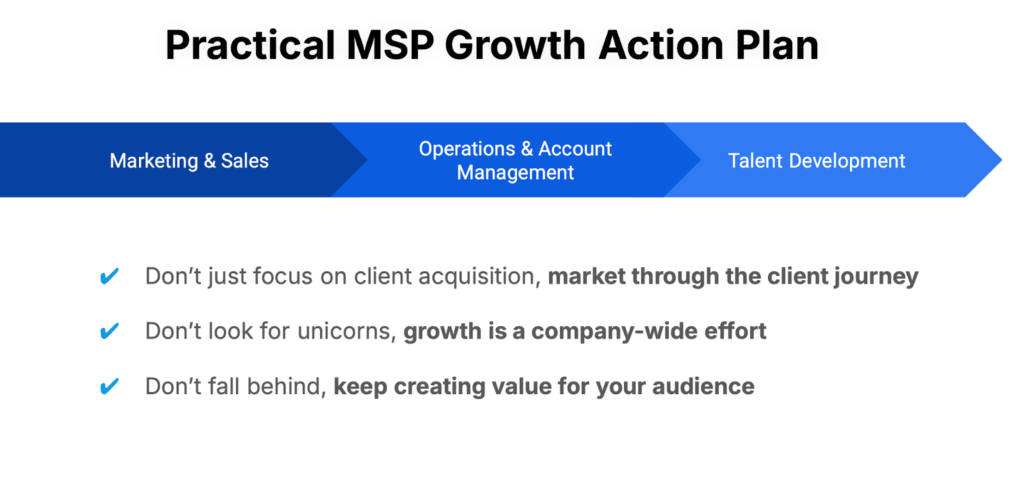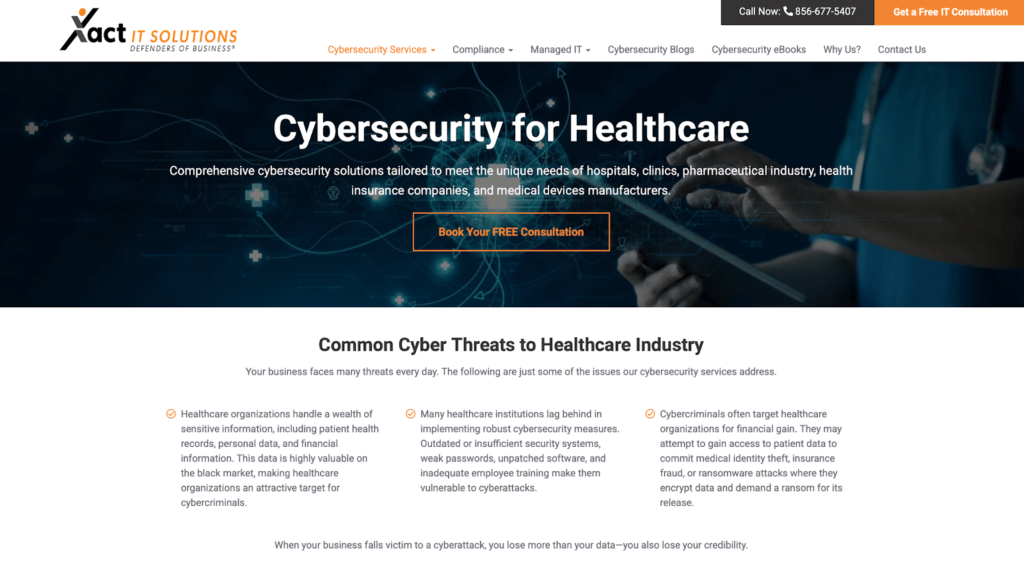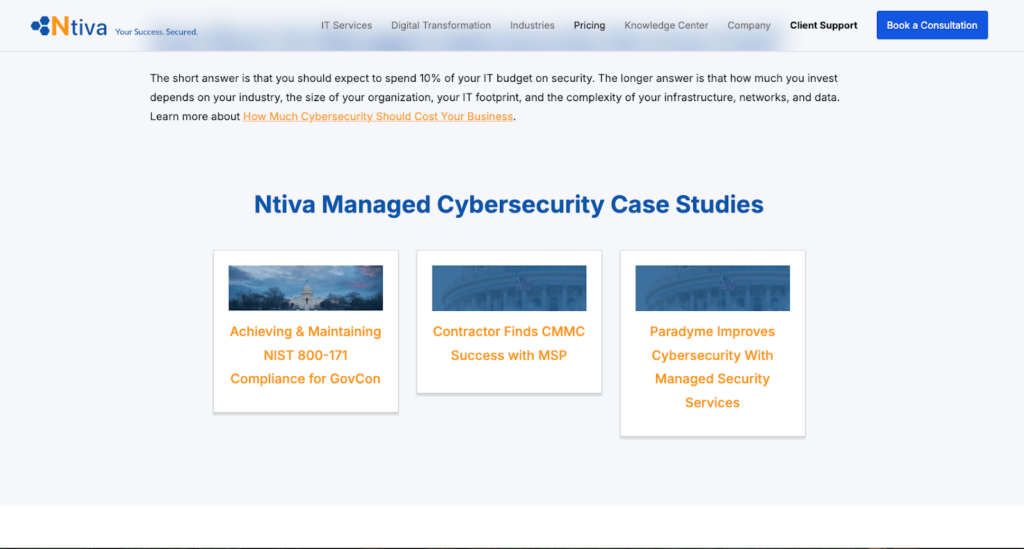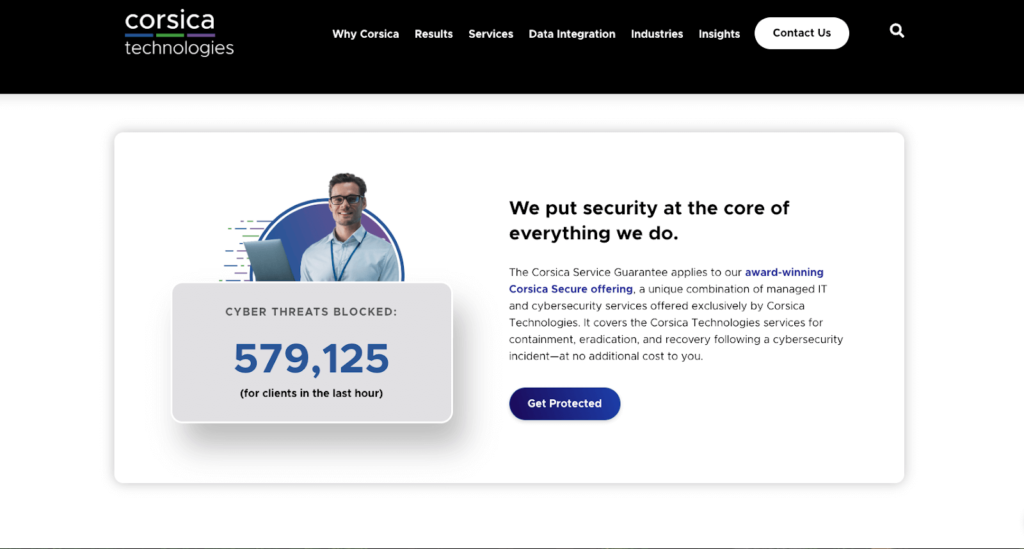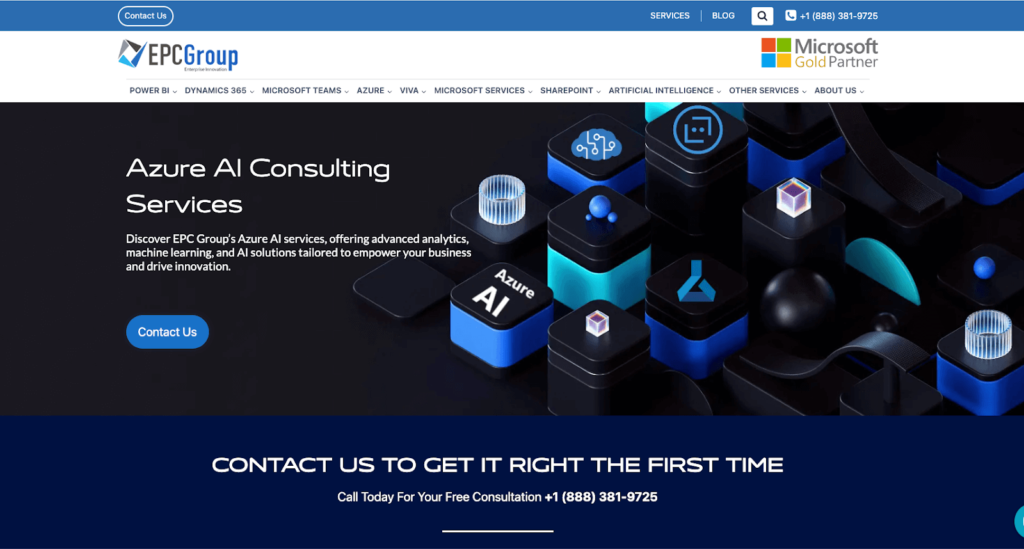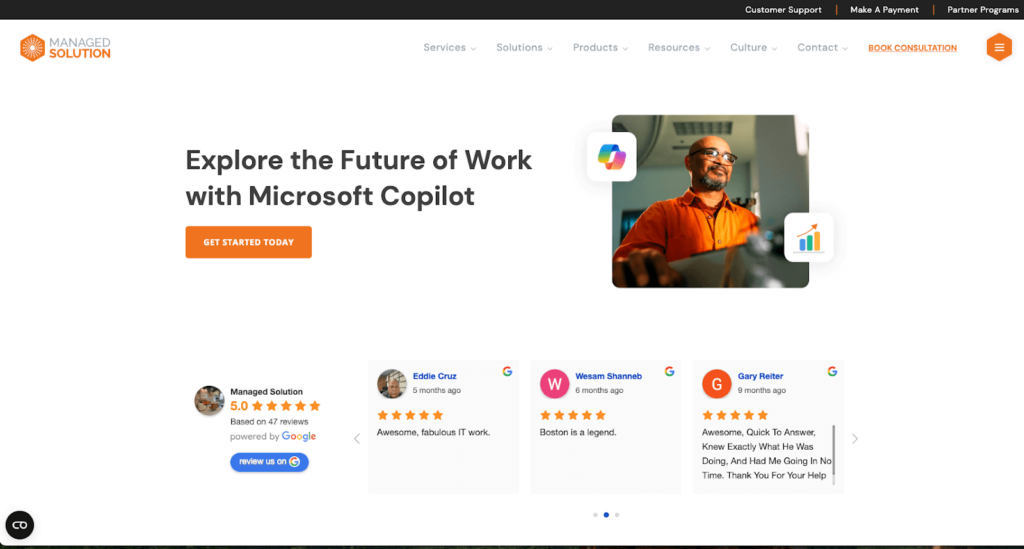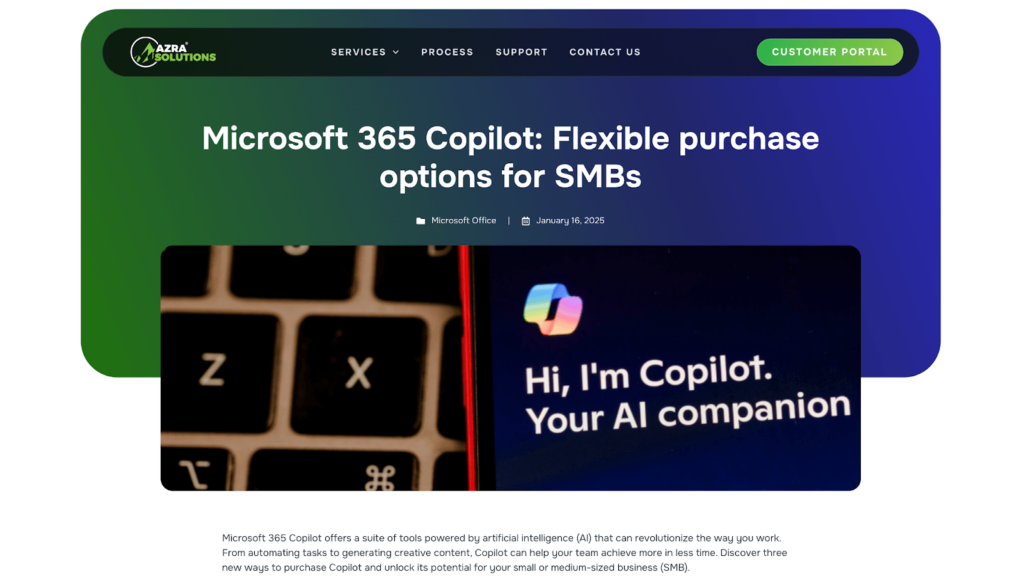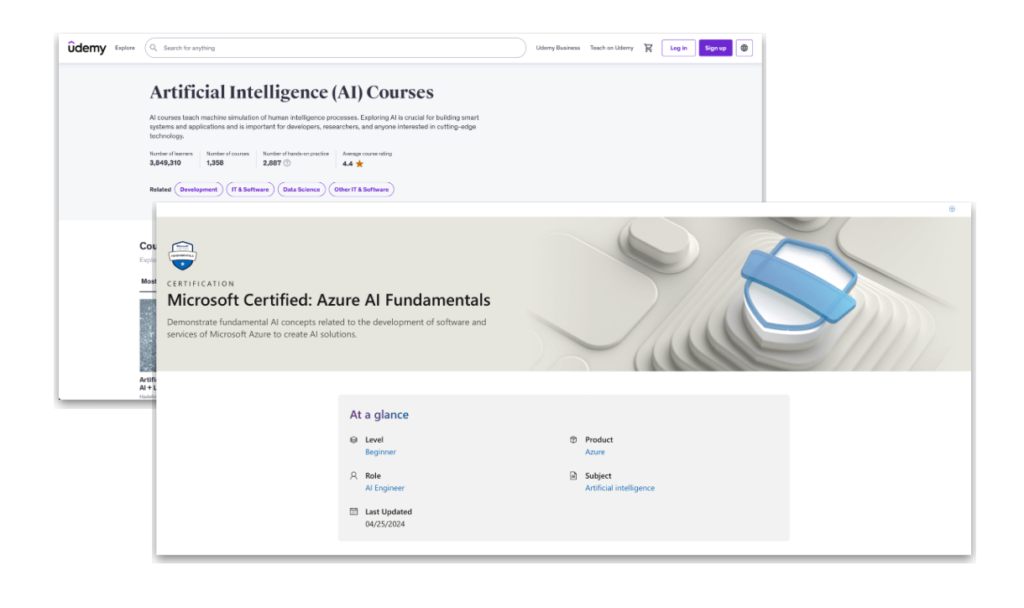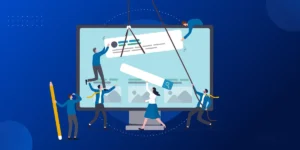Staying ahead of emerging trends in Managed IT Services has always been crucial for growth and competitiveness, and 2025 is poised to bring even more changes and opportunities.
In this post, I draw on insights from a recent conversation led by my colleagues Justin Millerson and Pierre Mol, who discussed what top MSPs are doing to navigate market consolidation, embrace new technologies, and maintain a competitive edge.
Below, you’ll find an overview of the MSP industry’s current context, as well as five practical marketing actions that can help your business thrive.
The Changing MSP Landscape
Mergers and acquisitions have remained a defining characteristic of the MSP industry for several years, a trend that is expected to continue through the end of 2024 and likely beyond. As MSPs consolidate, bigger players naturally have bigger marketing budgets, which can pose a challenge for smaller or medium-sized providers.
This means that if you don’t operate a large, multi-million-dollar MSP, you need to be more strategic about how you allocate your marketing resources and think carefully about ways to stand out or compete on factors other than sheer budget size.
Despite these challenges, there is still strong and growing demand for IT solutions. Major vendors continue to report widespread growth and show confidence in the industry’s future. At the same time, new technology vendors enter the market at a steady pace. This level of innovation suggests that opportunities abound for both established MSPs and new entrants.
Top Priorities for Successful MSPs
Cybersecurity remains a pressing concern within the MSP world. According to insights shared in the conversation, 97% of top MSPs emphasize security within their service offerings. This heightened focus comes at a time when the cyber threat landscape is intensifying, with a 32% increase in incidents that underscores the need for robust protective measures.
At the same time, compliance requirements are becoming stricter across a variety of industries, which means MSPs must stay informed about evolving regulations and proactively help their clients do the same.
Meeting these challenges can be an excellent way to differentiate your MSP. Specializing in certain verticals has proven especially effective. Healthcare, finance, and manufacturing remain three promising industries, each with their own specific security and compliance needs.
Healthcare organizations, for instance, must navigate HIPAA requirements to safeguard patient data; financial services companies need advanced data protection strategies to secure confidential financial information; and manufacturers need solutions to protect the interconnected devices central to modern production processes.
By focusing on a particular vertical and fully understanding its specialized pain points, an MSP can tailor its services, command premium pricing, and establish a reputation as a trusted advisor in that field.
Embracing AI for Operational Efficiency
One of the most significant shifts in the MSP industry is the widespread move toward integrating artificial intelligence into operations. Justin highlighted that AI-driven automation of routine tasks can yield a 40% to 60% reduction in manual efforts.
Some MSPs also experience faster issue resolution — sometimes up to three times quicker — by leveraging AI-based tools for troubleshooting and maintenance, which ultimately drives profit margins higher by as much as 25%.
AI can touch many aspects of an MSP’s day-to-day work. Automated ticket management systems help streamline client support processes by categorizing, assigning, and often resolving tickets without the need for multiple human touchpoints.
Predictive maintenance uses data and AI algorithms to anticipate system failures before they happen, reducing downtime and operational stress on both your team and your clients.
Resource optimization further refines how staff and infrastructure are allocated, creating efficiencies across the board. By deliberately adopting AI technologies, MSPs can operate more effectively, provide higher levels of service, and remain at the cutting edge of IT solutions.
Prioritizing Talent Development
While talent development is not a new concern in the MSP space, it has taken on fresh urgency in light of emerging and disruptive technologies such as AI and the ever-growing spectrum of cyber threats. It can be overwhelming for professionals to keep pace with the rate of change, leading to stress and long hours for teams trying to mitigate attacks or adopt advanced tools.
This environment makes it essential to train employees on an ongoing basis and have a plan for staying up to date on new developments.
Yet training alone is only the foundation. Acquiring technical certifications, for example, can validate your team’s knowledge and add credibility to your marketing and sales pitch.
What sets top-tier MSPs apart, however, is the ability to translate their technical credentials into practical, business-focused advice for clients. For instance, MSP staff need to demonstrate how certain IT solutions will help clients reduce expenses, increase revenue, or better position themselves within their market. It is not enough to simply be the “go-to tech person.”
Truly advanced MSPs add vertical knowledge to this mix, investing in conferences and sector-specific communities that align with their target markets. For example, if you are focusing on nonprofits, attending nonprofit technology conferences consistently over a span of years can help you build deep relationships and eventually lead to speaking engagements.
This level of specialized insight is invaluable, as clients quickly recognize when an MSP genuinely understands their challenges and can offer tailored solutions.
Developing an MSP Growth Action Plan
Many MSPs focus exclusively on winning new clients, but it is equally important to market throughout the entire customer journey. Acquisition is just the start — ongoing education, proactive consultation, and strategic upselling or cross-selling can help you maximize each client’s value.
This plan does not require “unicorn” talent but rather a collaborative, company-wide effort. Smaller MSPs can even have an advantage in fostering this sense of shared responsibility for growth.
It is also essential to maintain consistency in your marketing efforts. Just as going to the gym sporadically will not build long-term health, marketing only in stops and starts will fail to generate consistent results. If you bring on a few new clients, resist the temptation to pause all marketing activities.
By continuing to produce valuable educational materials and engage with both existing and potential customers, you keep your brand top of mind and maintain a steady pipeline.
Five Practical Marketing Actions
1) Revise Your Services Pages
An easy first step is to refresh your existing services pages to highlight the expertise you have built over time. This can include vertical knowledge, certifications, success stories, and awards. If you are capable of serving multiple industries — healthcare, finance, manufacturing, or others — consider creating dedicated pages that speak directly to each sector’s unique needs.
Doing so provides social proof through testimonials, case studies, and relevant statistics, while also offering a clearer path for prospective clients to identify which of your services best aligns with their requirements.
2) Develop a Dedicated AI Consulting Services Page
While AI may still feel like a new frontier, establishing a dedicated AI consulting page shows clients that you are current with innovative technologies.
Whether you focus on vendor-agnostic AI strategies or emphasize specific platforms like Microsoft Copilot, having a defined service offering around AI will set you up for more opportunities and put you ahead of the pack as many MSPs still haven’t defined their AI services portfolio. Even if search volume is initially small, demonstrating expertise in these rapidly evolving tools will help your MSP upsell existing customers and convert visitors who are specifically interested in AI-driven solutions.
3) Offer Educational Webinars for Clients
Webinars are a cost-effective way to educate your existing clients while also drawing in potential new business. Topics can include AI or cybersecurity best practices, both of which generate significant interest.
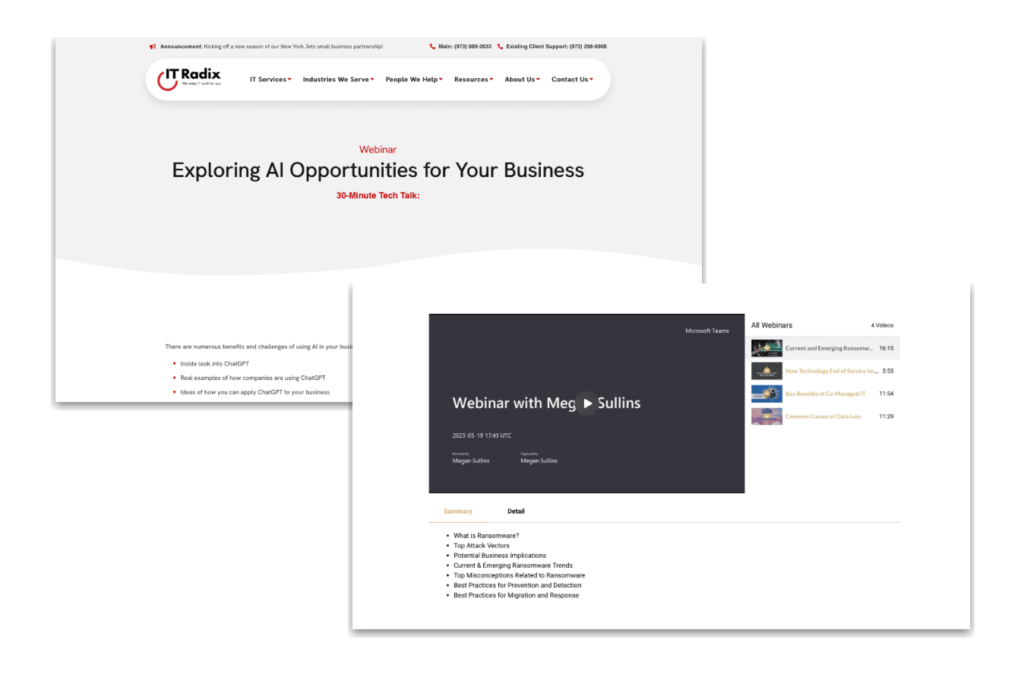
Offering webinars and then hosting recordings on your website can serve as a perpetual resource, building trust and demonstrating thought leadership. The key is to start small — perhaps a single webinar per quarter — and gradually scale up once you have mastered the process.
4) Produce Regular Blog Articles
Ongoing blogging is another way to stay on top of clients’ minds. You only need to start with something as modest as one post per month addressing the most frequently asked questions from your clients. Over time, these posts become an asset for newsletters, nurture campaigns, and SEO. Whether you handle writing in-house or collaborate with an external agency, having a consistent blog schedule transforms your website into a hub of knowledge.
5) Invest in Talent Training and Development
Finally, consider that one of the best ways to strengthen your marketing is by strengthening your internal team. As I alluded to earlier, investing in AI or cybersecurity training not only helps your staff remain at the cutting edge but also becomes a compelling part of your company’s story when attracting both clients and potential new hires.
Also, training does not have to be limited to technical roles. Non-client-facing departments can also benefit from learning about AI’s responsible use and best practices, ensuring every part of your organization is aligned with modern technology trends.
All of these actions — revising services pages, offering AI consulting, hosting educational webinars, maintaining a steady flow of blog content, and investing in talent — contribute to a practical mini MSP Growth Action Plan for 2025.
None of these tasks can be accomplished overnight, but each step moves you closer to being recognized as a leader in a rapidly consolidating and technologically evolving market.
By staying consistent and strategic in your approach, you can ensure that your MSP remains competitive, innovative, and valuable to both new and existing clients.
If you are interested in learning more about these strategies, consider exploring our updated MSP Marketing Guide.
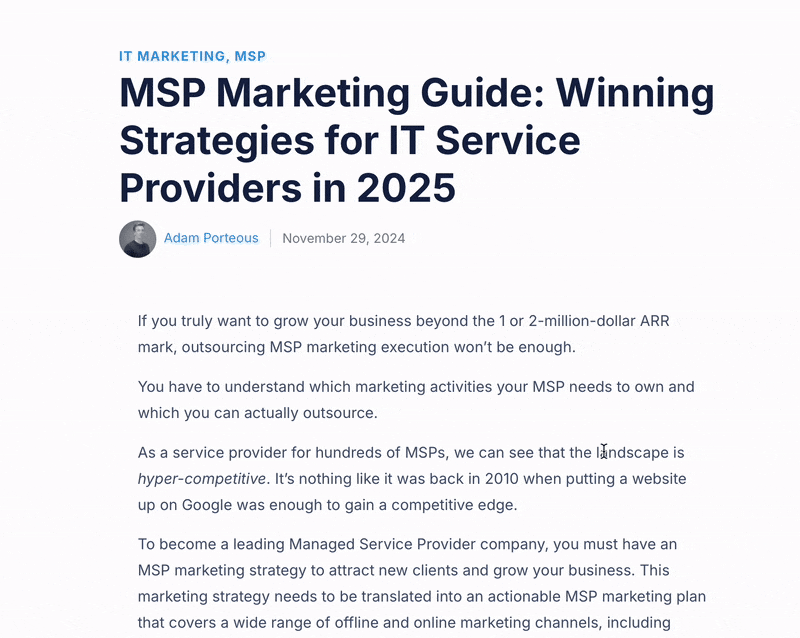
For those who want more personalized guidance, I also invite you to check out our MSP Marketing Services and connect with me for a free consultation — no strings attached! Reach out, and we will be happy to help you plan for success in 2025.


